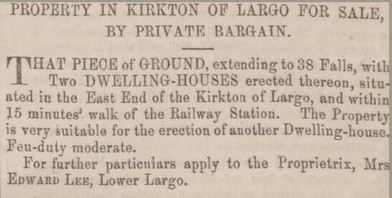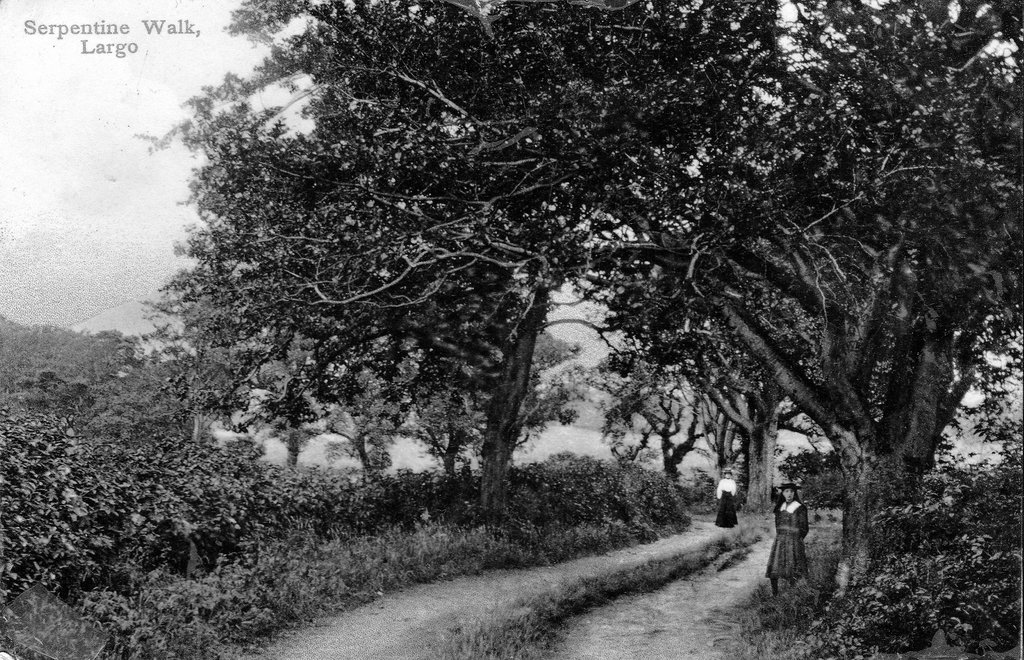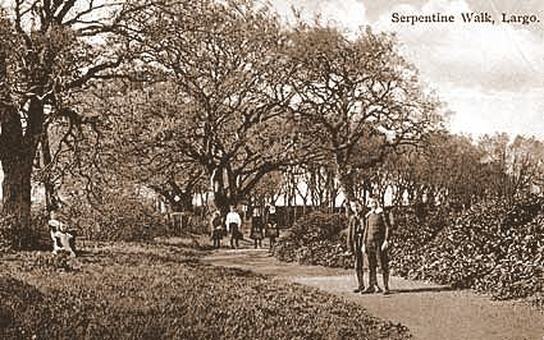
Now managed by the Woodland Trust, their management plan describes the Serpentine as a "coastal broadleaf woodland". It talks about the tree and plant types found there, the soil types and the topography of the area. However, what interests me is how this trail was used over its long history. It must have been a well-worn path for people from both villages before the days of mass private transport. Yes, it would have been used for leisure but it also would have been a route taken by traders, workers and travellers. Many an interesting character would have walked the Serpentine, for a wide variety of reasons.
One interesting suggestion from the Woodland Trust's documentation is that the walk was associated with the planned landscape of Largo House in the mid 18th century (although was likely a pre-existing route). Anecdotally, ladies from Largo House wishing to go sea-bathing would have been conveyed down the Serpentine - along with bathing paraphernalia - this being a direct and attractive route to the beach.
After 1857, when the railway came to Largo, the route would have been frequented by Kirkton residents either going to catch a train or meet a train at the station. The property advert from the 9 July 1857 Fife Herald boasts that it is "within 15 minutes walk of the Railway Station".
Another important group of users of the path must have been church-goers - particularly in the days before the Largo St David's Church. Sunday mornings must have seen folks from the Seatoun dressed up in their Sunday best heading up the Serpentine to the Largo Kirk. On occasion, locals must have made the journey on foot to attend christenings, marriages and burials.
Of course, the harbour would have been another destination for walkers along the Serpentine of yesteryear. Fishing, trade by the sea and regular steam packets calling at Largo are just some potential draws for Kirkton of Largo folks heading to their local 'port'. The Woodland Trust information states that there is a well-built wall running along much of the route, retaining the Largo Burn, which would imply the path was more than simply a recreational woodland walk. Indeed it was also referred to as the "Wall Walk".
No doubt the Largo Field Naturalists' Society members would have taken an interest in the flora and fauna of the Serpentine during their long history, which began in 1863. I also understand that school children from the east end of Lower Largo at one time went to school in the Kirkton and so would follow the "Serpie" to and from school. If you recall this or any other common purpose for folks walking the Serpentine (other than a bit of fresh air and exercise) please comment!
http://lundinandlargo.blogspot.co.uk/search/label/Serpentine%20Walk


 RSS Feed
RSS Feed
